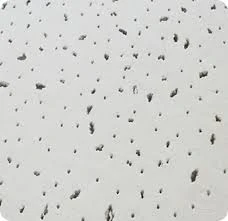- Afrikaans
- Albanian
- Amharic
- Arabic
- Armenian
- Azerbaijani
- Basque
- Belarusian
- Bengali
- Bosnian
- Bulgarian
- Catalan
- Cebuano
- Corsican
- Croatian
- Czech
- Danish
- Dutch
- English
- Esperanto
- Estonian
- French
- German
- Greek
- Hindi
- Indonesian
- irish
- Italian
- Japanese
- Korean
- Lao
- Malay
- Myanmar
- Norwegian
- Norwegian
- Polish
- Portuguese
- Romanian
- Russian
- Serbian
- Spanish
- Swedish
- Thai
- Turkish
- Ukrainian
- Uzbek
- Vietnamese
Avq . 09, 2024 00:30 Back to list
High-Performance Rigid Mineral Wool Insulation Board for Superior Thermal and Acoustic Protection
Rigid Mineral Wool Insulation Board An Essential Component for Energy Efficiency
In today’s world, the demand for sustainable building materials has increased significantly, driven by the growing consciousness around energy efficiency and environmental impact. Among various insulation options, rigid mineral wool insulation boards stand out for their unique properties and numerous advantages. These boards are an essential component in modern construction, providing excellent thermal performance and acoustic insulation.
Rigid mineral wool insulation boards are composed of natural minerals, primarily basalt rock and recycled slag. The manufacturing process involves melting these materials at high temperatures and then spinning them into fibers. This process creates a dense, rigid board that retains the beneficial properties of mineral wool, such as fire resistance and moisture control.
One of the foremost benefits of rigid mineral wool insulation boards is their superior thermal insulation capabilities. This insulation type effectively reduces heat loss in winter and heat gain in summer, leading to a more stable indoor climate. The boards have a high R-value, which is a measure of thermal resistance. Higher R-values indicate better insulation performance, meaning less energy is required to heat or cool a space. Consequently, building owners can enjoy reduced energy bills, making rigid mineral wool insulation a wise investment for both commercial and residential structures.
In addition to thermal performance, rigid mineral wool boards offer excellent sound attenuation properties. The dense structure of these boards absorbs sound waves, making them an ideal choice for applications in areas where noise reduction is essential, such as theaters, recording studios, and multi-family housing units. With increasing urbanization, noise pollution has become a significant concern, and employing effective sound insulation solutions is critical for improving the quality of life in densely populated areas.
rigid mineral wool insulation board

Another important characteristic of rigid mineral wool insulation is its fire resistance. Mineral wool is non-combustible, which means it can withstand high temperatures without contributing to the spread of flames. This property is particularly advantageous in commercial buildings, where fire safety regulations are stringent. Using rigid mineral wool boards helps meet these codes while providing peace of mind to building occupants and owners alike.
Moreover, mineral wool insulation boards are resistant to moisture and mold, which is crucial for maintaining indoor air quality. Unlike traditional fiberglass insulation, which can be susceptible to absorbing water and supporting mold growth, rigid mineral wool boards retain their insulating properties even in humid conditions. This resistance not only enhances the durability of the insulation but also protects the health of the building’s occupants.
Sustainability is another key factor driving the popularity of rigid mineral wool insulation boards. The materials used in their production are often sourced from abundant natural resources, and the manufacturing process can incorporate recycled materials. Furthermore, mineral wool is recyclable at the end of its life cycle, contributing to a circular economy and minimizing waste in landfills.
In conclusion, rigid mineral wool insulation boards are an indispensable component of energy-efficient construction. Their superior thermal and acoustic insulation properties, combined with fire resistance and moisture control, make them a versatile choice for a variety of applications. As the world moves toward more sustainable building practices, the demand for high-performing insulation materials like rigid mineral wool will undoubtedly continue to rise, creating a healthier, more energy-efficient built environment for future generations.
-
Transform Interiors with PVC Gypsum Ceiling: A Stylish, Durable, and Moisture-Resistant SolutionNewsMay.19,2025
-
The Smart Interior Upgrade: Discover the Durability and Versatility of Gypsum Ceiling Access Panel SolutionsNewsMay.19,2025
-
The Smart Choice for Interior Design: Discover the Value of PVC Gypsum Ceiling SolutionsNewsMay.19,2025
-
Mineral Fiber Ceiling Tiles: The Smart Blend of Performance and AestheticsNewsMay.19,2025
-
Mineral Fiber Ceiling Tiles: The Superior Choice Over Gypsum for Sound and Fire SafetyNewsMay.19,2025
-
Mineral Fiber Ceiling Tiles: Eco-Friendly Strength and Style for Every CeilingNewsMay.19,2025







